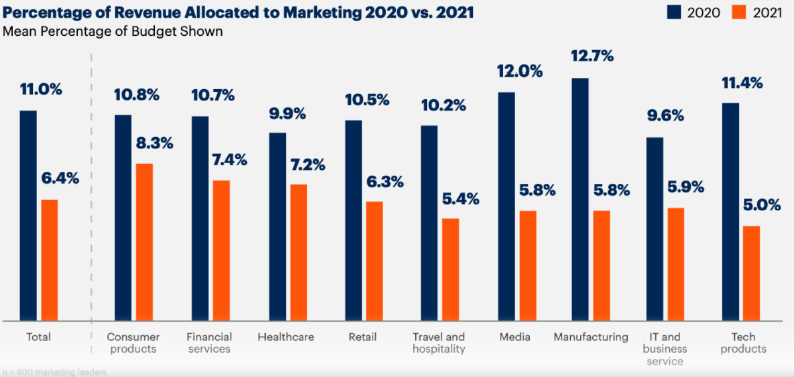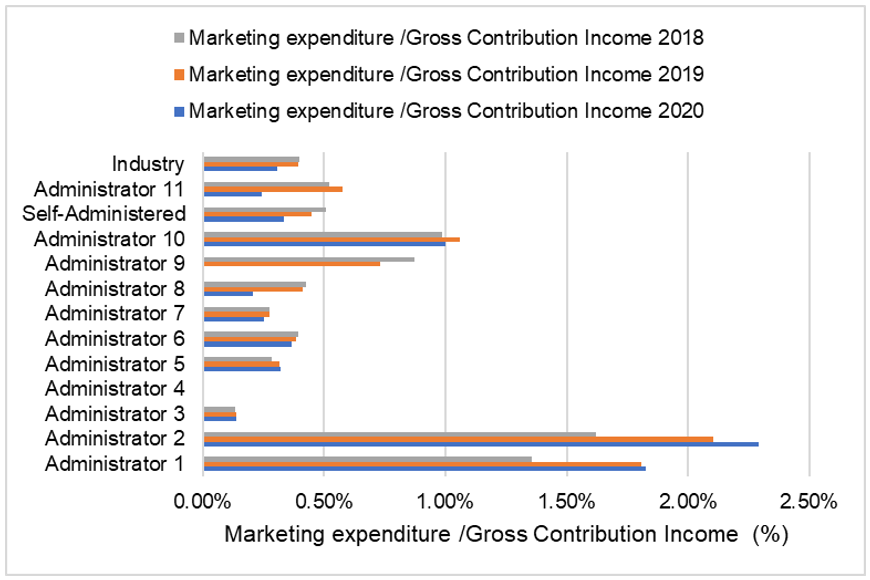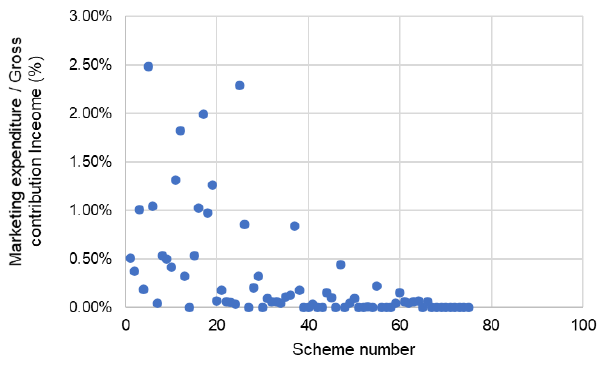Digital Marketing – a Global Phenomenon
Digital marketing as an online marketing approach connects brands with consumers via the Internet or other forms of digital communication (Appel, et al. [1-3]). Digital marketing sometimes referred to as social media marketing, is a marketing activity, including branding using various web-based media such as blogs, websites, e-mail, AdWords, or social networks (Sanjaya, et al. [4]). Digital marketing all-encompass digital channels, such as content marketing, SEO, e-mail marketing, social media marketing, mobile marketing, amongst others, to connect with consumers (Bala, et al. [5]). From the organisation’s perspective, digital marketing offers companies lower costs, improve brand awareness, and increase sales (Dwivedi, et al. [2,3]). Studies have shown that service quality positively affects consumer loyalty and retention (Murali, et al. [6] Fida, Ahmed, Al-Balushi & Singh, 2020; Rahmani-Nejad, Firoozbakht and Taghipoor, [7]). According to Tiago & Verıssimo, social media also allows companies to implement innovative forms of communication and co-create content with their customers (Tiago, et al. [8]). From a customer perspective, digital marketing offers consumers convenience and quick service, provides 24/7 access, creates a personalised experience (Salehi, et al. [9] Appel, Grewal, Hadi, et al. [1]). Private or public corporates have also used digital communication technology as their marketing channel (Kansal, et al. [10]). More health systems globally have adopted digital marketing to reach their constituents, even more pronounced during COVID-19, where many governments employed digital marketing strategies to deal with misinformation surrounding the pandemic, which was more prevalent in social media platforms.
In the corporate environment such as insurance, more specifically health insurance services that are a public good and intangible, require different digital marketing efforts than corporate industries that offer tangible products or services (Kansal, et al. [10]). The pandemic has certainly affected budget trends in marketing activities, and the crisis showed changes in consumer behaviour and marketing spending by companies during economic downturns caused by lockdowns (Hoekstra, et al. [11]). (Figure 1) The CMO Spend Survey depicts a decline of 6.4% in 2021 compared to the 11% budgeted for 2020, thus indicating that companies have become even less aggressive on their marketing strategies (CMO Spend Survey [12]). Companies have seemed to have opted for new cost-effective marketing techniques amid pandemic pressures on marketing budgets (Chaffey [13]). The figure below further shows that Consumer brands, financial services companies, and healthcare seem to have had a lesser impact in the media sector, travel, hospitality, and tech products. However, the CMO Survey report indicates a positive posture on digital experience during the pandemic; more than eighty- 85% of companies surveyed said that they observed increased value placed on digital experiences by their customers (CMO Spend Survey, [12]) Source: Gartner State of marketing budget report, 2021
Digital Marketing – South Africa
medical schemesMedical schemes in South Africa cover relevant health care services and cover 8.9 million people seeking health care services in the private sector (CMS [14]). The medical scheme administration function includes administrative duties to ensure the functioning of medical schemes such as membership records, contribution management, claims management, financial management reporting, information management, data control, and customer services. Medical schemes are regulated by the Council for Medical Schemes (CMS) which is an autonomous statutory body created by parliament in South Africa. Shonubi and Akintaro validated the relationship between the communication approach and efficient organisational performance (Shonubi, et al. [15]). Ordinarily, if there is active communication, then customer loyalty and trust in the company or product is favourable. The effectiveness of various marketing communication has also been found to the function of loyalty (Hänninen, et al. [16]). Customer communication also entails more details about the product. It is more about product training, which proper communication strategies can enhance. The CompCom report made the following findings (CompCom [17] Solanki et al, 2020) which could be improved by effective communication to members:The complexity of the offerings by medical schemes (270 products) made it difficult for consumers to compare and make informed choices.Completeness of consumer informationThe role of brokers and other agents does not meet customer needs or add value.Lack of information or communication from healthcare suppliers and facilities would allow consumers to make informed choices.
Figure 2: Medical schemes marketing expenditure by an administrator as a proportion of gross contribution income, generated by the researcher from CMS, 2021,2020, 2019. Administrator 1 depicts the administrator without disclosing actual names.
A study on medical scheme beneficiaries on digital platforms was conducted by PWC (PricewaterhouseCoopers) in 2014. The study found a disparity between open schemes and restricted schemes in the active digital platforms they use to interact with their members (PWC [18]). The study further revealed that significantly more open schemes have either a Facebook account or a Twitter account than restricted schemes (PWC [18]). These findings are consistent with the operating model of theschemes where open schemes must market themselves and increase their market share.Marketing expenditure, medical schemes – 2020. A marketing expense is an item of marketing expenditure that is a payment made for a marketing-related investment or expense (Kokemuller, [19]). Marketing expenditure is a function of the volume of sales, advertising expenditures, salesforce expenditures, sales promotion expenditures and distributors’ commission paid and price of marketing investments (Baidya, et al. [20]). Specifically, in medical schemes, marketing expenditure is a non-healthcare expense, mainly attributed to attracting new customers to the scheme, effectively communicating product lines to customers, information sharing, and advertising. (Figure 2) shows that marketing expenditure as a proportion of gross contribution income declined by 5% between 2019 and 2020, still lower than 0.4% at the industry level.
Administrators such as Administrator 1 & 2 were the only two administrators that reported an increase of 1% and 9%, respectively. Administrator 1 & 2 spent significantly more than other administrators in marketing relative to the gross contribution income, 1.58% and 2.29%, respectively. Figure 3 below further illustrate that at the administrator level, the relative ratios was as high as 2.3% in 2020. Willie recommends that the marketing expenditure relative to the gross contribution income ratio in medical schemes be kept below 1 % and further calls for curbing marketing expenditure and reducing waste through regulations and guidelines (Willie, 2022) [21]. Marketing expenditure reporting in medical schemes currently does not make an explicit distinction between traditional and digital channels, and we recommend reporting at the various channel to assess the performance, value and return on investment.
Figure 3: Medical schemes marketing expenditure as a proportion of gross contribution income, generated by the researcher from CMS, 2021.
References
- Appel G, Grewal L, Hadi R, Andrew T, stophenet, et al. (202) The future of social media in marketing. J of the Acad Mark Sci 48: 79-95.
- Dwivedi YK, Ismagilova E, Hughes DL, Yichuan Wang, Ramakrishnan Raman, et al . (2021) Setting the Future of Digital and Social Media Marketing Research Perspectives and Research Propositions. International Journal of Information Management 59: 1-37.
- Ajina AS (2019) The perceived value of social media marketing. An empirical study of online word of mouth in Saudi Arabian context. Journal of Entrepreneurship and Sustainability Issues 6(3):1512-1527.
- Sanjaya R, Tarigan J (2009). Creative Digital Marketing. Jakarta: PT Elex Media Komputindo.
- Bala M, Verma D (2018) A Critical Review of Digital Marketing. International Journal of Management IT & Engineering 8(10): 321-339.
- Murali S, Pugazhendhi S, Muralidharan C (2016) Modelling and investigating the relationship of after sales service quality with customer satisfaction retention and loyalty – a case study of home appliances business. Journal of Retailing and Consumer Services 30: 67-83.
- Rahmani Nejad L, Firoozbakht Z, Taghipoor A (2014) Service Quality Relationship Quality and Customer Loyalty (Case Study: Banking Industry in Iran). Open Journal of Social Sciences 2(4): 262-268.
- Tiago MTPMB Veri ssimo JMC (2014) Digital marketing and social media Why bother?. Business Horizons. Elsevier 57(6): 703-708.
- Salehi F, Abdollahbeigi B, Langroudi AC, Salehi F (2012) The Impact of Website Information Convenience on E-commerce Success of Companies Procedia – Social and Behavioral Sciences. 57(2012): 381-387.
- Kansal A, Jain V (2020) Impact of Digital Marketing on the Purchase of Health Insurance Products. Jour of Adv Research in Dynamical & Control Systems 12(2): 93-96.
- Hoekstra JC, Leeflang PSH (2020) Marketing in the era of COVID-19 Ital J Mark. 2020(4): 249-260.
- CMO Spend Survey (2021) The State of Marketing Budgets 2021.
- Chaffey D (2021) Digital marketing trends: 25 practical recommendations to implement. Smart Insights.
- Council for Medical Schemes (2021) Annual Report 2020/2021. Pretoria South Africa.
- Shonubi AO, Akintaro AA (2016) The Impact of Effective Communication On Organizational Performance. The International Journal of Social Sciences and Human Invention 3(3): 1904-1914.
- Hänninen N, Karjaluoto H (2017) The effect of marketing communication on business relationship loyalty, Mark Intell. Plan 35(4): 458-472.
- Competition Commission of South Africa (CompCom). (2019). Health Market Inquiry: Final findings and recommendations report [homepage on the Internet]. Pretoria: Competition Commissioner.
- PricewaterhouseCoopers PWC (2014) Drivers of Change: Research paper for medical schemes. PricewaterhouseCoopers.
- Kokemuller N (2020) What Is a Marketing Expenditure? [online] Smallbusiness.chron.com.
- Baidya M, Basu P (2008) Effectiveness of marketing expenditures A brand level casestudy. Journal of Targeting, Measurement and Analysis for Marketing16(3): 181-188.
- Willie MM (2022) Marketing Initiatives, Expenditure Effect on Organisational Performance in the South African Health Care Market. Submitted in fulfilment of the Requirements for the degree MPhil in Marketing at the Institute of Marketing Management(IMM) Graduate School. South Africa.

 Opinion
Opinion


